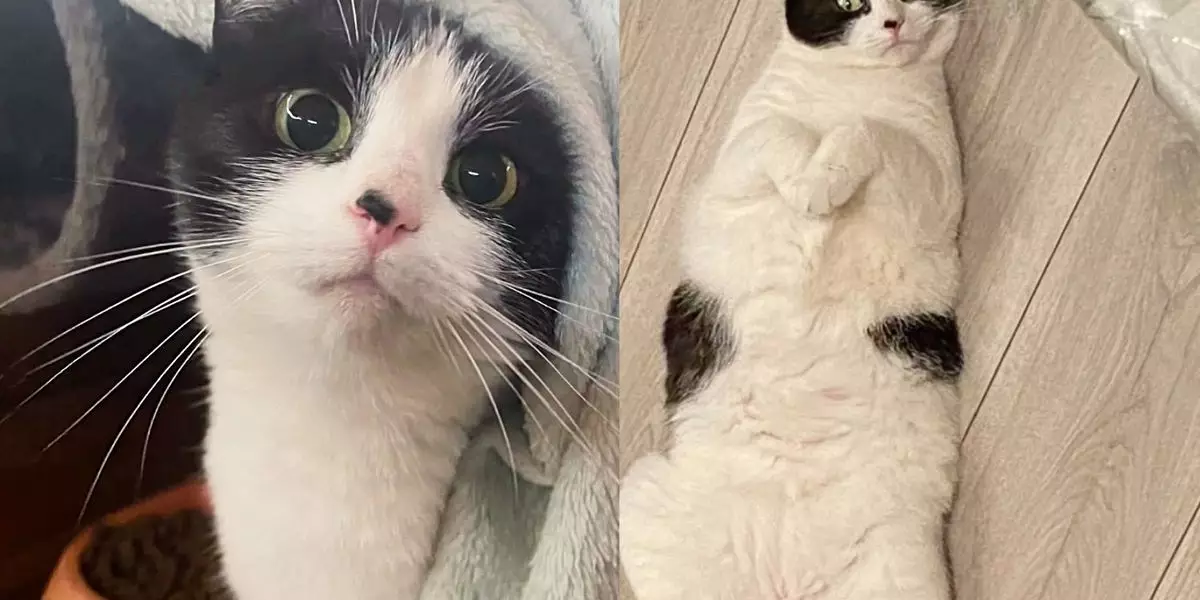Imagine walking through a serene park, when you unexpectedly stumble upon a stray cat and her kitten lingering by a bench. For many, this moment would evoke a mixture of curiosity and compassion. Such was the experience for passersby who encountered Meg and her little one, Mog, enduring 36 hours of struggle in search of warmth and food. The Stray Cat Club, a group dedicated to rehabilitating and finding homes for stray animals, quickly intervened to alter the course of their lives.
The juxtaposition of nature’s beauty against the stark reality of abandonment is powerful. Here were two beings, once lost to the world’s indifference, now given hope and a second chance by the kindness of strangers. The duo’s pitiful condition upon being rescued — a thin mother desperately nursing her frail kitten suffering from a cold — served as a harrowing reminder of the vulnerability of stray animals. It’s a stark representation of how quickly one can fall from grace, and the harsh reality of survival in the streets.
The Healing Power of Love and Care
Once reunited within the nurturing environment of their foster home, Meg began to reveal her true nature — a delightful surprise to those caring for her. Known for her initial shyness, Meg quickly transformed as she settled into her new surroundings. This transition reiterates an essential truth in the world of animal rescue: love can provoke healing, enabling creatures to metamorphose from shadows of their former selves to beacons of joy.
Her quirky quirks served as gentle reminders of her resilience. Observations made by her foster family showcased her dignified demeanor and her peculiar but endearing table manners during meal times. Such characteristics illuminated her personality beyond the surface — Meg was not just a stray but a unique, lovable being with distinct preferences and behaviors. She thrived in the tranquility of her new life, a testament to the nurturing environment provided by her caregivers.
A Journey of Trust and Affection
As Meg’s shyness faded, her longing for human companionship became evident. It was heartwarming to witness her delicate dance of trust. This transition reflects an essential aspect of animal psychology; it underscores the importance of security and comfort in fostering affectionate bonds. Observing Meg follow her humans into the kitchen, standing on tiptoes in anticipation of a treat, illuminated her character even further.
The way she engaged with her caregivers — rolling onto her back, paws tucked adorably, seeking belly rubs with an inviting gaze — paints an irresistible picture of trust and joy. It’s fascinating how cats, often seen as independent, can also showcase an affectionate need for companionship if only provided with the right circumstances. Meg’s actions exemplified this beautifully, inviting love in her gentle, subtle way.
Embracing a New Life
Meg’s evolution from a terrified stray to a cherished family member epitomizes hope amid adversity. Not only did she find a peaceful home, but she also restricted her circle of friendship to humans, thriving in her role as the sole pet in the household. Cats possess an innate ability to adapt when they’re met with care and compassion. Meg’s preference for solitude — both in her affection and in her environment — showcases the individuality of every cat and their unique emotional needs.
Her playful antics, from engaging with toys to providing humorous “supervision” from her belly-up position, reflect an endearing charm that resonates with animal lovers. Each act embodies her recovery and the newfound joy of life, inviting smiles and laughter from those around her.
Ultimately, Meg’s story is not just a tale of survival; it’s also a celebration of the unique relationships that can form between humans and animals. She embodies the idea that love, patience, and nurturing can heal wounds that many would assume are beyond repair. Now, with her spirit ignited and her health restored, Meg stands ready for a forever home — a joyful testament to the power of kindness and resilience in recovering from life’s harsh realities.


Leave a Reply